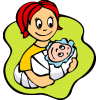 Researchers from Kaohsiung Medical University, in Taiwan, China compared acupuncture and electro-acupuncture to no treatment.
Researchers from Kaohsiung Medical University, in Taiwan, China compared acupuncture and electro-acupuncture to no treatment.
First, the details.
- 60 women, who had had spinal anesthesia during cesarean section, were randomly assigned to a treatment group.
- Acupuncture group
- Electro-acupuncture
- Control group: no treatment
- After the operation, acupuncture or electro-acupuncture was applied on the bilateral acupuncture point, San Yin Jiao (Sp6).
- The women controlled the use of their pain medicine.
And, the results.
- Acupuncture and electro-acupuncture group delayed the time of requesting morphine by 10 to 11 minutes vs the control group.
- The total dose of pain medicine used in the first 24 hours was 30% to 35% less in the acupuncture group and the electro-acupuncture group vs the control group — a significant difference.
- There was no significant difference between the acupuncture group and the electro-acupuncture group.
- Pain scores within the first 2 hours were statistically lower with either form of acupuncture vs the control group.
- 2 hours later, there were no significant differences in the visual analogue scale (VAS) scores between treatment groups and the control group.
- The incidence of opioid-related side effects, such as dizziness, was less in the acupuncture group and electro-acupuncture group than in the control group.
The bottom line?
The authors concluded, “This study shows that the application of acupuncture and electro-acupuncture could definitely delay the time of requesting pain relief medication after cesarean section and decrease the PCA doses used within the first 24 hours.â€
This may be the first study of the effect of acupuncture after cesarean section on the use of pain medicine. My PubMed search revealed no other publications.
10/1/09 10:06 JR